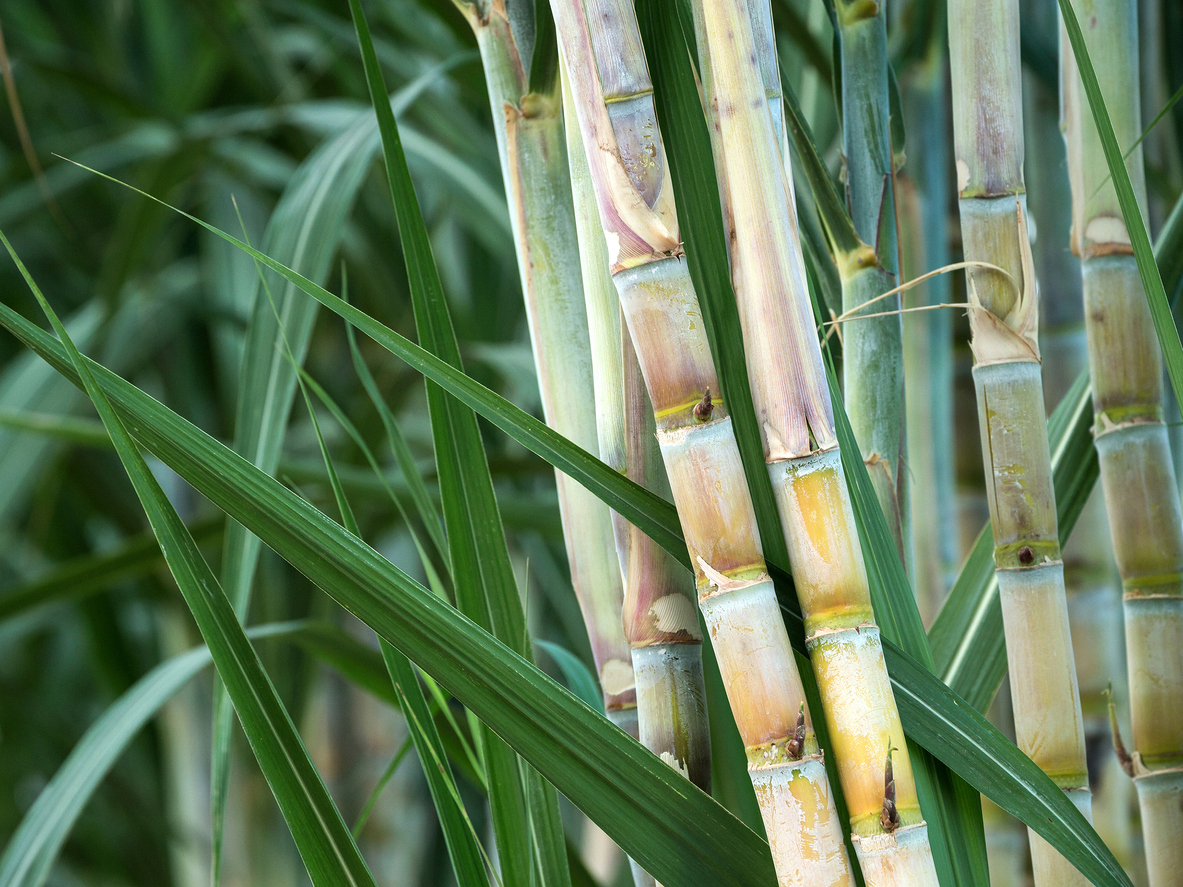
Pac1 Gene Integrated Into Sugarcane to Promote Resistance Against SCSMV
August 17, 2022| |
Chinese scientists optimized a new method of developing sugarcane that is resistant to the sugarcane streak mosaic virus (SCSMV). The findings provide new options for researchers to improve the breeding efforts to develop sugarcane resistant to multiple virus strains.
RNA viruses in sugarcane are one of the causes of low yield and decreased sugar content. Scientists are trying to develop sugar varieties with broad-spectrum virus resistance to help solve the problem. They focused on the virus' double-stranded replicative form (RF) that exists in the replication cycle, knowing that the double-stranded RNA-specific ribonuclease encoded by the Pac1 gene can specifically recognize and degrade double-stranded RNA. When the double-stranded RNA-specific ribonuclease in sugarcane varieties degrades the double-stranded RNA RF produced by the virus, the virus' replication cycle is blocked resulting in a failed infection.
Scientists in China took this information to proceed with their study that focused on expressing the PAC1 protein in prokaryotic cells and artificially synthesized double-stranded RNA RF of the SCSMV using its cDNA template. The PAC1 protein and the double-stranded RNA RF were mixed to test the degradation activity of the protein. Then the Pac1 gene was ligated to a plant expression vector to be introduced to a sugarcane cultivar using Agrobacterium tumifaciens-mediated transformation method.
There were initially 15 transgenic sugarcane roots obtained after selection, and 13 were used to test their resistance against the virus. It was found that the mosaic symptoms on the leaves, had lower viral loads, and had better plant heights compared to the wild type. The scientists concluded that the method was able to promote the resistance level of the transgenic shoots against the virus and can help sugarcane breeding efforts to develop varieties with broad-spectrum virus resistance.
More information can be found in Frontiers in Sustainable Food Systems.
| |
You might also like:
- Sugar from GM Sugarcane at Par With That from Conventional Sugarcane
- Brazil's Biotech Sugarcane Area to Double in 2022
- Research Team Converts Sugarcane to Cold Tolerant, Oil-Producing Crop
Biotech Updates is a weekly newsletter of ISAAA, a not-for-profit organization. It is distributed for free to over 22,000 subscribers worldwide to inform them about the key developments in biosciences, especially in biotechnology. Your support will help us in our mission to feed the world with knowledge. You can help by donating as little as $10.
-
See more articles:
-
News from Around the World
- FAO Reports Decline in Global Food Commodity Prices for July
- Network of Plant Scientists to Help Improve Biotech Research Capacity Globally
- Synthetic Genes Found to Modify Root Structures and Increase Plant Resiliency
- Research Reveals Circadian Clock's Guiding Role in Plant Cell Differentiation
- Australian Scientists Identify Natural Plant Mechanism for Water Loss
- Workshop to Explore Policy Considerations for Gene Editing in Asia and Australia
- Vietnamese Government Push for Agbiotechnology to Help Mitigate Climate Change Effects
- EFSA: Five-event GM Stack Maize and Subcombinations as Safe as Non-GM Maize
-
Research Highlights
- Tricoderma Gene Confers Sheath Blight Resistance to Rice
- Study Finds Long Noncoding RNA that Enhances Plant's Tolerance to Cold
- Pac1 Gene Integrated Into Sugarcane to Promote Resistance Against SCSMV
-
Plant
- CRISPR Reveals Role of OsPPR9 in Rice Chloroplast Development
-
Read the latest: - Biotech Updates (December 17, 2025)
- Gene Editing Supplement (December 17, 2025)
- Gene Drive Supplement (February 22, 2023)
-
Subscribe to BU: - Share
- Tweet

